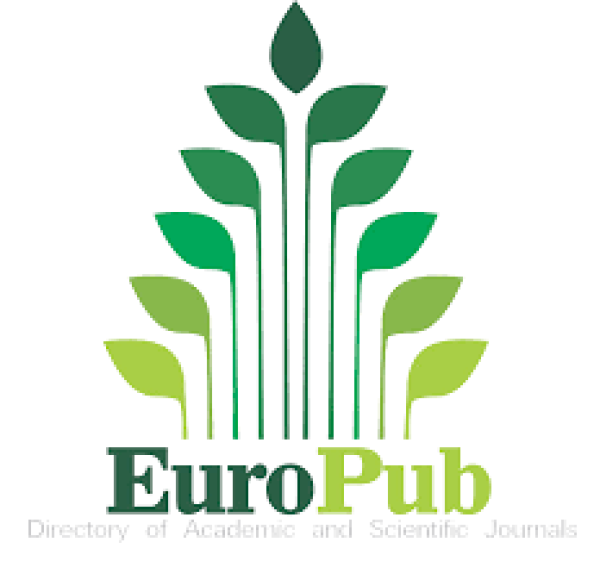Histopathological Profiling of Banana Varieties Infected with Fusarium oxysporum f. sp. cubense Tropical Race 4
DOI:
https://doi.org/10.65141/jeraff.v4i2.n1Keywords:
Histopathology, Pathogenicity, Virulence, FocTR4, Banana VarietiesAbstract
Fusarium wilt disease has been a major threat to the banana industry in the Philippines and efforts are of utmost importance to combat it. The present study evaluated the histopathological characterization of Fusarium oxysporum f. sp. cubense Tropical Race 4 infecting two susceptible varieties, the Lakatan and Cavendish cv. Gran Naine banana seedlings. This is to understand the pathogen’s aggressiveness and the host plant response mechanism. The study was conducted using histopathological profiling techniques, including pathogen isolation, pathogenicity testing, and tissue analysis. The pathogenicity test for the FocTR4 isolates has demonstrated an external symptom of yellowing on the older leaves and pseudostem splitting, with an internal manifestation of corm and vascular discoloration. Histological examination of the FocTR4-infected tissue exhibited massive colonization of fungal mycelia to the xylem vessels and was able to produce a chlamydospores and microconidia structure. Moreover, both varieties exhibited a defense response to the pathogen attack by the production of its phenolic compounds which is more evident in the Lakatan variety. These findings emphasize the virulence nature of the FocTR4 and highlight the importance of developing resistant cultivars and integrated management strategies. Further research should focus on the molecular level in understanding the histopathological characterization of FocTR4-infected banana varieties at the nursery and field conditions.
References
Ara, A., Akram, A., Ajmal, M., Akhund, S., Nayyar, B. G., Seerat, W., & Chaudhry, S. M. (2017). Histopathological studies of sesame (Sesamum indicum) seedlings infected with Fusarium oxysporum. Plant Pathology & Quarantine, 7(1), 82–90. https://doi.org/10.5943/ppq/7/1/10
Australian Centre for International Agricultural Research. (n.d.). Integrated management of Fusarium wilt of bananas in the Philippines and Australia – Final report. Retrieved from https://www.aciar.gov.au/publication/integrated-management-fusarium-wilt-bananas-philippines-and-australia-final-report
Bakry, F., Carreel, F., Jenny, C., & Horry, J. (2008). Genetic improvement of banana. In Banana: Technology, production and marketing (pp. 3–50). Springer. https://doi.org/10.1007/978-0-387-71201-7_1
Chen, A., Sun, J., Matthews, A., Armas-Egas, L., Chen, N., Hamill, S., Mintoff, S., Tran-Nguyen, L. T. T., Batley, J., & Aitken, E. A. B. (2019). Assessing variations in host resistance to Fusarium oxysporum f. sp. cubense Race 4 in Musa species, with a focus on the subtropical race 4. Frontiers in Microbiology, 10, Article 1062. https://doi.org/10.3389/fmicb.2019.01062
EPPO Global Database: European and Mediterranean Plant Protection Organization. (n.d.). Fusarium oxysporum f. sp. cubense Tropical race 4 (FUSAC4) [Overview]. Retrieved from https://gd.eppo.int/taxon/FUSAC4
Garcia-Bastidas, F. (2022). Fusarium oxysporum f. sp. cubense tropical race 4 (Foc TR4) [Dataset]. CABI Compendium. https://doi.org/10.1079/cabicompendium.59074053
Garcia-Bastidas, F. A., Quintero-Vargas, J. C., Ayala-Vasquez, M., Schermer, T., Seidl, M. F., Santos-Paiva, M., Noguera, A. M., Aguilera-Galvez, C., Wittenberg, A., Hofstede, R., Sørensen, A., & Kema, G. H. J. (2019). First report of Fusarium wilt tropical race 4 in Cavendish bananas caused by Fusarium odoratissimum in Colombia. Plant Disease, 104(3), 994. https://doi.org/10.1094/PDIS-09-19-1922-PDN
Lumawag, R. J. F. (2019, September 29). Fusarium wilt: A decade-old problem of the banana industry. SunStar Davao. Retrieved from https://www.sunstar.com.ph/davao/business/fusarium-wilt-a-decade-old-problem-of-the-banana-industry#google_vignette
Pegg, K. G., Coates, L. M., O’Neill, W. T., & Turner, D. W. (2019). The epidemiology of Fusarium wilt of banana. Frontiers in Plant Science, 10, Article 1395. https://doi.org/10.3389/fpls.2019.01395
Ploetz, R. C. (2006). Fusarium wilt of banana is caused by several pathogens referred to as Fusarium oxysporum f. sp. cubense. Phytopathology, 96(6), 653–656. https://doi.org/10.1094/PHYTO-96-0653
Rivera, D. (2023, July 27). Philippines still world’s second biggest banana exporter. Philstar.com. Retrieved from https://www.philstar.com/business/2023/07/27/2284028/philippines-still-worlds-second-biggest-banana-exporter
Rocha, A. D. J., Da Silva Soares, J. M., Nascimento, F. D. S., Rocha, A. D. S., De Amorim, V. B. O., De Souza Ramos, A. P., Ferreira, C. F., Haddad, F., & Amorim, E. P. (2022). Molecular, histological, and histochemical responses of banana cultivars challenged with Fusarium oxysporum f. sp. cubense with different levels of virulence. Plants, 11(18), 2339. https://doi.org/10.3390/plants11182339
Solpot, T., Pangga, I., Banconguis, R., & Cumagun, C. J. R. (2016). Occurrence of Fusarium oxysporum f. sp. cubense tropical race 4 and other genotypes in banana in South Central Mindanao, Philippines. Philippine Agricultural Scientist, 99(4), 370–373. Retrieved from https://www.researchgate.net/publication/313823070
Thakker, J. N., Patel, S., & Dhandhukia, P. C. (2012). Induction of defense-related enzymes in banana plants: Effect of live and dead pathogenic strain of Fusarium oxysporum f. sp. cubense. ISRN Biotechnology, 2013, 601303. https://doi.org/10.5402/2013/601303










